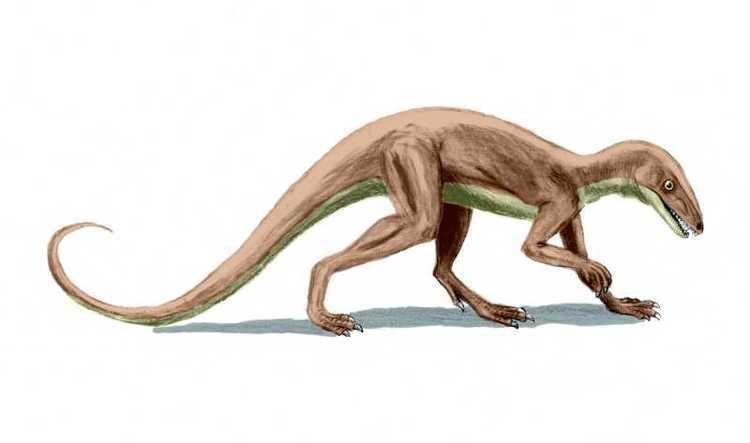 | ||
The Ladinian is a stage and age in the Middle Triassic series or epoch. It spans the time between 242 Ma and ~235 Ma (million years ago). The Ladinian was preceded by the Anisian and succeeded by the Carnian (part of the Upper or Late Triassic).
Contents
The Ladinian is coeval with the Falangian Chinese regional stage.
Stratigraphic definitions
The Ladinian was established by Austrian geologist Alexander Bittner in 1892. Its name comes from the Ladin people that live in the Italian Alps (in the Dolomites, then part of Austria-Hungary).
The base of the Ladinian stage is defined as the place in the stratigraphic record where the ammonite species Eoprotrachyceras curionii first appears or the first appearance of the condont Budurovignathus praehungaricus. The global reference profile for the base (the GSSP) is at an outcrop in the river bed of the Caffaro river at Bagolino, in the province of Brescia, northern Italy. The top of the Ladinian (the base of the Carnian) is at the first appearance of ammonite species Daxatina canadensis.
The Ladinian is sometimes subdivided into two subages or substages, the Fassanian (early or lower) and the Longobardian (late or upper). The Ladinian contains four ammonite biozones, which are evenly distributed among the two substages:
Palaeontology
Many Ladinian and Carnian vertebrates have been discovered in the paleorrota in Brazil: Rhynchosaurs, thecodonts, exaeretodonts, Staurikosaurus, Guaibasaurus, Saturnalia tupiniquim, Sacisaurus, Unaysaurus, and many others. Paleorrota lies within the Santa Maria Formation and the Caturrita Formation.
Vertebrates of Ladinian age include:
